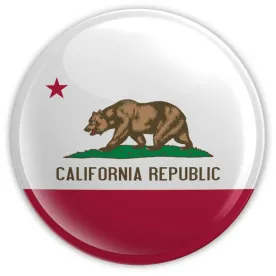For a more general description of the new law, please see our previous alert. Because of the new laws enforcement guidelines and related penalties, and potential tax implications for employees and employers, please contact the authors here or a Nelson Mullins Employment and Labor or Employee Benefits and Compensation Attorney with any questions.
On the eve of enforcement, California’s Department of Industrial Relations (“DIR”) released FAQs and the required poster for the state’s 2022 COVID-19 Supplemental Paid Sick Leave (“SPSL”). As a reminder, the new law will take effect on Saturday, February 19, 2022, with retroactive application back to January 1, 2022. Barring extensions, the law will remain in effect until September 30, 2022. Employers should note the following updates and highlights from the newly released guidance.
Effective Date
The DIR’s guidance at FAQ 11 definitively states that the February 19, 2022 effective date is when employers are required to provide leave. In other words, there is no further grace period beyond the ten days between enactment and enforcement that is now expiring. Employers should be prepared to provide the notice linked above and to properly manage leave requests despite the weekend enforcement date and the upcoming federal holiday. This timing circumstance similarly applies to retroactive payments, which employers may have to process on an abbreviated timeline given the law’s requirement that employers pay benefits by the payday of the next regular payroll period.
Notice
Employers must display the updated required poster in a conspicuous location at the worksite and provide electronic copies to employees who do not frequent a physical workplace.
Covered Employees
The law covers employees who cannot work remotely under the qualifying reasons listed in the new law and address in our previous alert. This is in addition to the 2021 SPSL program or similar federal or local programs provided in 2020 or 2021. California’s 2022 SPSL does not apply to independent contractors, but we remind employers of California’s more discerning criteria regarding independent contractors and to check with counsel to avoid any misclassification risks.
Clarification of Certain Qualifying Reasons
Childcare
For employees seeking SPSL pay after absence due to closure of a child’s school or place of care, the DIR’s guidance confirms that the closure or partial closure must be due to COVID-19 on the premises that renders care unavailable.
Employees seeking retroactive benefits under this reason only qualify if the school or daycare closed on or after January 1, 2022. The guidance specifies that “[t]his does not include caring for a child whose school or daycare was closed before January 1, 2022.” As written, the guidance seemingly excludes any overlapping closure into the effective period, although the language is somewhat unclear when compared against the law’s intent. Because of the surging Omicron variant numbers in January 2022, employee questions under this scenario are not unlikely, and employers should seek further advice if and where these questions arise.
Isolation Orders, DPH Guidance, etc.
The DIR’s guidance clarifies that any order or guidance for an employee to isolate, or an employee’s family member or other household member covered by the law, must be specific to the covered employee. This excludes any general stay-at-home order.
The DIR’s guidance notes the shifting goalposts on what isolation or quarantine periods apply to an employee’s particular circumstances. Accordingly, it refers to the updated resources provided by the California Department of Public Health or other relevant guidance under Cal/OSHA’s recently renewed and updated Emergency Temporary Standards (ETS).
We further note that the DIR’s guidance reiterates the limited documentation employers can require from employees seeking pay for leave under this reason, which we address further below.
Available Hours
Employees who qualify for 2022 SPSL extending beyond the law’s September 30, 2022 expiration are entitled to finish taking the amount of leave they are eligible to receive.
Payment Deadlines
While retroactive 2022 SPSL payments are due by a qualifying employee’s next regular payday, the DIR guidance clarifies that payments are otherwise due on the payday for the next regular payday after the employee completes SPSL leave.
Documentation
Notably, the DIR’s guidance reiterates the very limited circumstances where employers can require employees to provide documentation to verify how and why they meet a qualifying reason under the new law. Simply put, employers cannot deny employees from taking SPSL immediately upon their oral and/or written request or condition as much based on any kind of medical certification. The guidance outlines a reasonableness standard where employers may otherwise deny SPSL benefits, i.e. the employee says they require leave pursuant to an isolation order only to be later spotted at a crowded party or sporting event, but employers should tread carefully and seek advice where necessary to avoid any kind of retaliation claim, which the statute presumes for improper denials.
Employers may still require some documentation of a positive test result before employees received paid benefits allocated under the 2022 SPSL’s forty (hour) allowance of as much for employees or a family member in their care who test positive for COVID-19. That can be in any medium confirming the positive test result, including a picture of the test itself. Employers can deny SPSL pay where employees fail to provide a positive test result.
Employers may also require medical certification that an employee requires additional time to recover from side effects where an employee uses more than three (3) days or twenty-four (24) hours for a single vaccine or booster appointment.
As always, employers must avoid asking for additional medical information and maintain separate records of this documentation pursuant to ADA requirements, like we have previously outlined.
Requests for Retroactive Payments
Generally and timing
The DIR’s guidance makes an important note that employers are not required to pay SPSL benefits for employees’ oral or written requests for SPSL benefits made before February 19, 2022 for leave taken since January 1, 2022. Employees must reiterate or renew any such requests.
The guidance highlights an important example where employees are entitled to seek retroactive payments for time spent receiving or taking a family member to receive vaccine or booster shots, even if for a few hours, and any related recovery, between January 1, 2022 and February 19, 2022. If the employer previously calculated leave for those employees under California’s safe and sick leave law or other state and federal leave laws like the California Family Rights Act, the employer should credit that time back and award supplemental SPSL benefits. Certain exceptions may apply relating to specific employers’ private leave programs and applicable local laws effective during the retroactive period. In these circumstances, employers should seek further advice to ensure compliance with each law.
Wage statement requirements
Finally, as it relates to employees who receive retroactive SPSL benefits or are otherwise entitled to other leave amounts credited back pursuant to the new law’s requirements, employers should take care to ensure that they accurately reflect as much in the employee’s itemized wage statements, or other written payday communication. We remind employers that those notice requirements diverge from the previous law, particularly where statements must now list SPSL hours used, versus hours available. This applies to the scenario just described and otherwise. If an employee has not used any SPSL time, the wage statement must indicate as much with a “zero” or similar notation.
Documentation
For employees seeking retroactive SPSL pay under the forty (40) hours the law designates for employees who test positive for COVID or related care for covered family members, the DIR’s guidance confirms that employers may require documentation of the earlier positive test result. Documentation can include medical records, written communications from a provider or testing company, a picture of a test result, or some contemporaneous communication between the employee and the employer regarding the same.
Use and Calculation of Hours
FAQ 18 outlines and charts how employers should calculate leave for part-time employees. Employers should seek guidance from counsel if any uncertainty exists on amounts and eligibility for SPSL pay under this framework.
The DIR’s guidance separately confirms that the law does not require consecutive use of SPSL leave, either as a timeline or between the allocated “buckets” that the new law provides. Employers may benefit from crafting policies explaining as much to ensure employees know intermittent SPSL is available and to otherwise avoid excessive or unnecessary use under the new law.
Return to Work Testing
The law allows employers to require employees to take a COVID-19 test after five (5) days have elapsed (subject to change per CDC and state health agency guidance) since the employee’s first positive test. Employers should provide the test itself or cover the cost of testing. If employees refuse or fail to take the employer-provided test, the employer may deny benefit payments for any leave taken after it provides the test, provided the employee actually receives the physical test or the employer has secured an appointment for the employee at a testing facility.
The DIR’s guidance creates some confusion here because it prohibits employers from rejecting or specifying certain kind of tests required for an employee to take initial leave after a positive diagnosis (i.e. over-the-counter versus lab tests; PCR versus antigen tests). The guidance separately implies employers have some authority over what tests they can require employees to take before returning to work. In situations where employees refuse one testing medium but suggest another, employers should lean towards permitting the latter, and otherwise seek further advice depending on the specific circumstances.
Interplay with ETS Exclusion Pay
The DIR’s guidance reiterates the statute’s most significant departure between the 2021 and 2022 SPSL laws, that employers cannot restrict employees from receiving California ETS Exclusion Pay, where applicable, before taking SPSL. As such, employers should prepare managers or other personnel responsible for administering leave to avoid denying ETS leave if required or requested, regardless of the higher compensation due employees under that law.






 />i
/>i
